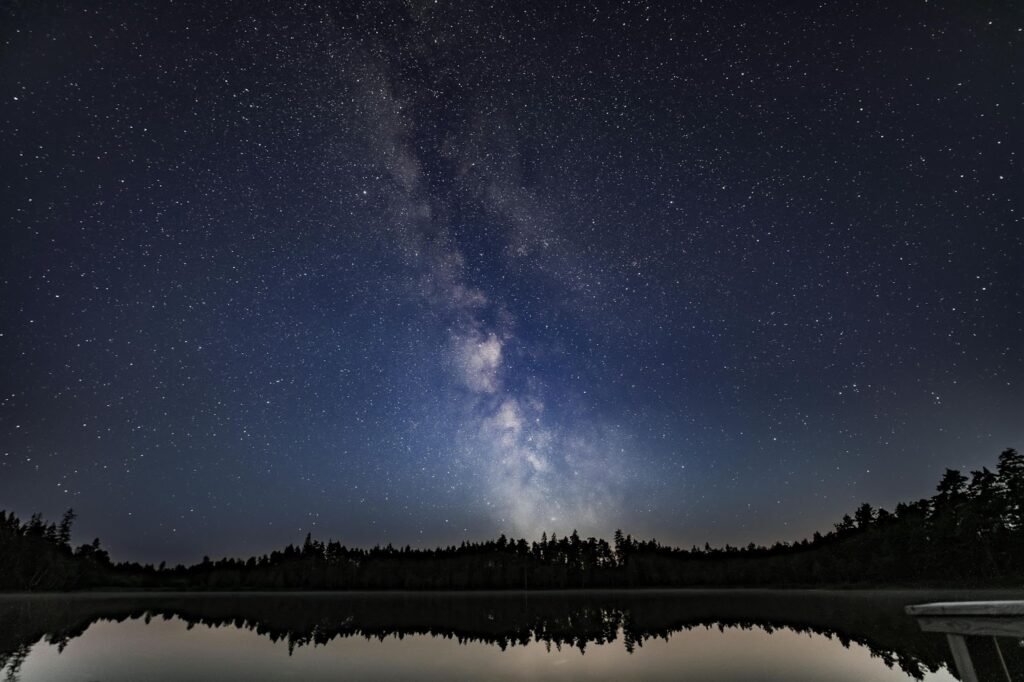The Celestial Spectacle: A Deep Dive into the “String of Lights”
Introduction
Have you ever looked up at the night sky and witnessed an unusual string of lights, seemingly moving in formation? This captivating phenomenon, often referred to as the “string of lights” or “beads on a string,” has intrigued and puzzled observers for centuries. In this article, we’ll delve into the various explanations and theories surrounding this celestial spectacle, drawing from the latest scientific research and eyewitness accounts.
Historical Accounts and Early Explanations
The sighting of unusual lights in the sky has been documented since ancient times. Early civilizations often attributed these phenomena to supernatural beings, gods, or celestial events. In more recent history, as scientific understanding advanced, various explanations emerged.
Meteors and Meteor Showers: One of the most common theories is that the “string of lights” are simply meteors or meteor showers. When these space rocks enter Earth’s atmosphere, they create bright streaks of light as they burn up. While this explanation is plausible, it doesn’t account for the organized formation often observed in these sightings.
Aircraft and Formations: Another possibility is that the lights are from aircraft, especially military formations or aerial displays. The synchronized movement and consistent spacing of the lights can make them appear as a string. However, many eyewitness accounts describe unusual flight patterns or speeds that are inconsistent with conventional aircraft.

Modern Theories and Scientific Investigations
In recent years, scientists have explored more unconventional explanations for the “string of lights” phenomenon.
Alien Spacecraft: One of the most popular theories, often fueled by science fiction and popular culture, is that the lights are evidence of extraterrestrial activity. Some believe they could be spacecraft from advanced civilizations, perhaps conducting surveillance or research. While this idea is intriguing, there is currently no concrete scientific evidence to support it.
Natural Atmospheric Phenomena: Scientists have also investigated the possibility that the lights are caused by natural atmospheric phenomena, such as plasma formations or electromagnetic anomalies. These phenomena can create unusual light displays, but their exact mechanisms and relationship to the “string of lights” sightings are still being studied.
Optical Illusions: The “string of lights” might occasionally just be an optical trick. Factors like atmospheric conditions, light pollution, or individual perception can contribute to misinterpretations of celestial objects.
Recent Notable Sightings and Analysis
To gain a better understanding of the “string of lights” phenomenon, it’s helpful to examine recent notable sightings and the scientific investigations that followed.
The Phoenix Lights Incident: One of the most widely discussed sightings occurred in 1997 over Phoenix, Arizona. Thousands of people witnessed a large, triangular-shaped object accompanied by smaller lights. While initial investigations suggested a possible military explanation, the case remains unsolved, and many believe it may be evidence of extraterrestrial activity.
The Belgium UFO Wave: In the late 1980s and early 1990s, Belgium experienced a wave of UFO sightings, often involving triangular-shaped objects with lights. The Belgian military conducted a thorough investigation, including radar tracking, but was unable to provide a definitive explanation.
Ongoing Research and Future Directions
Despite numerous investigations and theories, the “string of lights” phenomenon continues to baffle scientists and the public alike. Ongoing research aims to:
Gather More Data: Collect additional eyewitness accounts, photographs, and video evidence to improve our understanding of the phenomenon.
Utilize Advanced Technology: Employ advanced telescopes, radars, and other instruments to detect and analyze celestial objects that may be related to the sightings.
Explore Atmospheric Phenomena: Conduct experiments and simulations to investigate the potential role of natural atmospheric processes in creating unusual light displays.
Frequently Asked Questions About the “String of Lights” Phenomenon
What are the most common theories about the “string of lights” phenomenon?
The most common theories include meteors or meteor showers, aircraft or formations, alien spacecraft, natural atmospheric phenomena, and optical illusions.
Have there been any recent notable sightings of the “string of lights”?
Yes, there have been several notable sightings in recent years, such as the Phoenix Lights incident in 1997 and the Belgium UFO wave in the late 1980s and early 1990s.
Is there any scientific evidence to support the theory that the “string of lights” are alien spacecraft?
No, there is currently no concrete scientific evidence to support the theory that the “string of lights” are alien spacecraft.
What are the challenges in investigating the “string of lights” phenomenon?
Challenges include the rarity of sightings, the difficulty in obtaining reliable eyewitness accounts and evidence, and the limitations of current scientific technology.
What can we expect from future research into the “string of lights” phenomenon?
Future research may involve gathering more data, utilizing advanced technology, and exploring atmospheric phenomena. The goal is to gain a better understanding of the phenomenon and potentially uncover its true nature.
Can you provide examples of natural atmospheric phenomena that could create unusual light displays?
Yes, examples include plasma formations, electromagnetic anomalies, and noctilucent clouds. These phenomena can produce various types of light, including balls of light, streaks, or even entire regions of the sky illuminated with unusual colors.
How can I report a sighting of the “string of lights”?
If you witness a sighting of the “string of lights,” it’s recommended to report it to local authorities or organizations that investigate UFO sightings. You can also share your experience with online communities or forums dedicated to this topic.
What are the ethical considerations when investigating the “string of lights” phenomenon?
It’s important to approach investigations with an open mind and avoid making unfounded claims or promoting misinformation. Ethical considerations include respecting the privacy of eyewitnesses, ensuring the accuracy of information, and avoiding sensationalism.
Conclusion
The “string of lights” phenomenon remains a captivating mystery, sparking curiosity and imagination. While we have explored various theories and investigated notable sightings, definitive answers remain elusive. As scientific research progresses, we may one day uncover the true nature of this celestial spectacle. Until then, the “string of lights” will continue to inspire wonder and intrigue those who look up at the night sky.
To read more, click here.












Post Comment